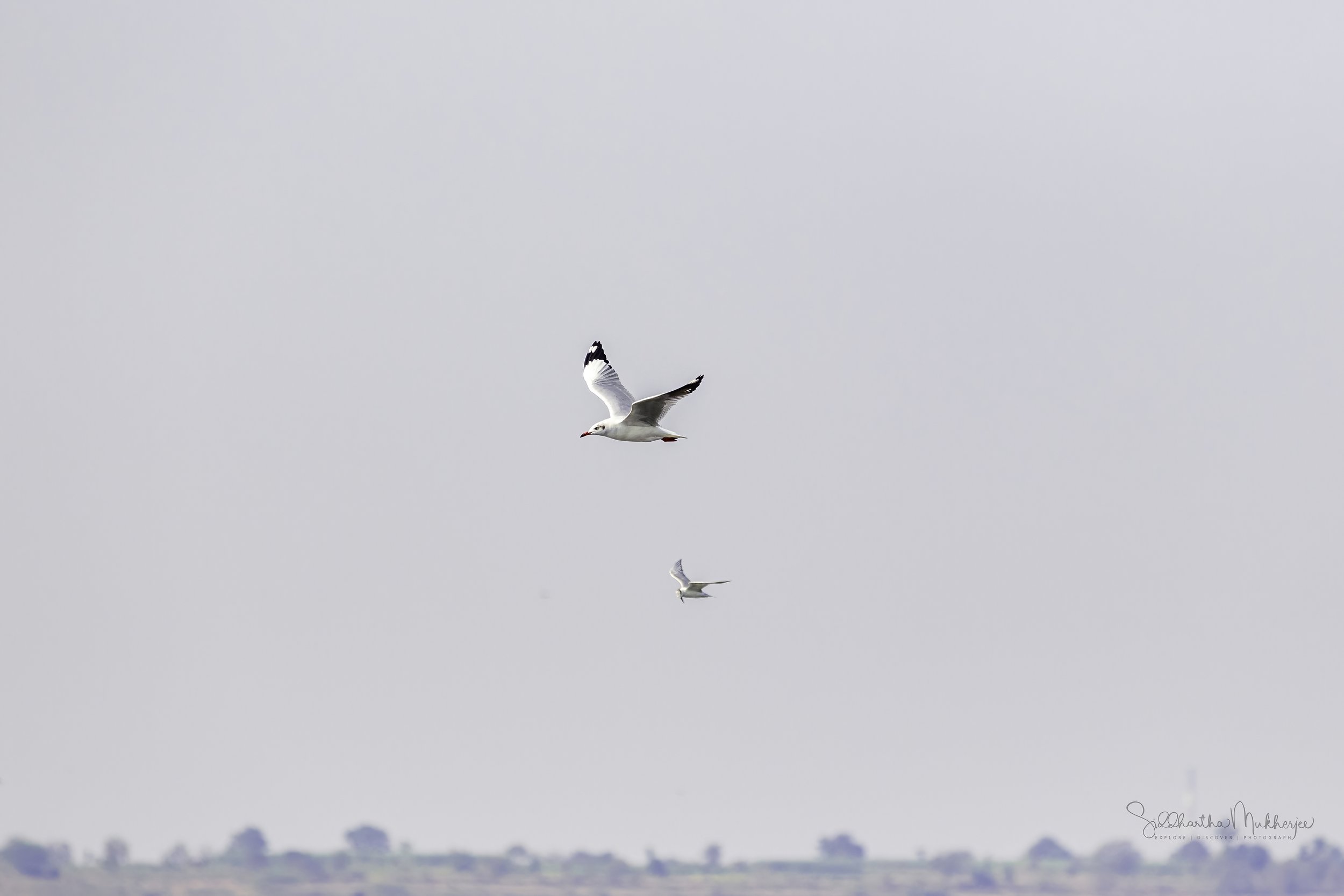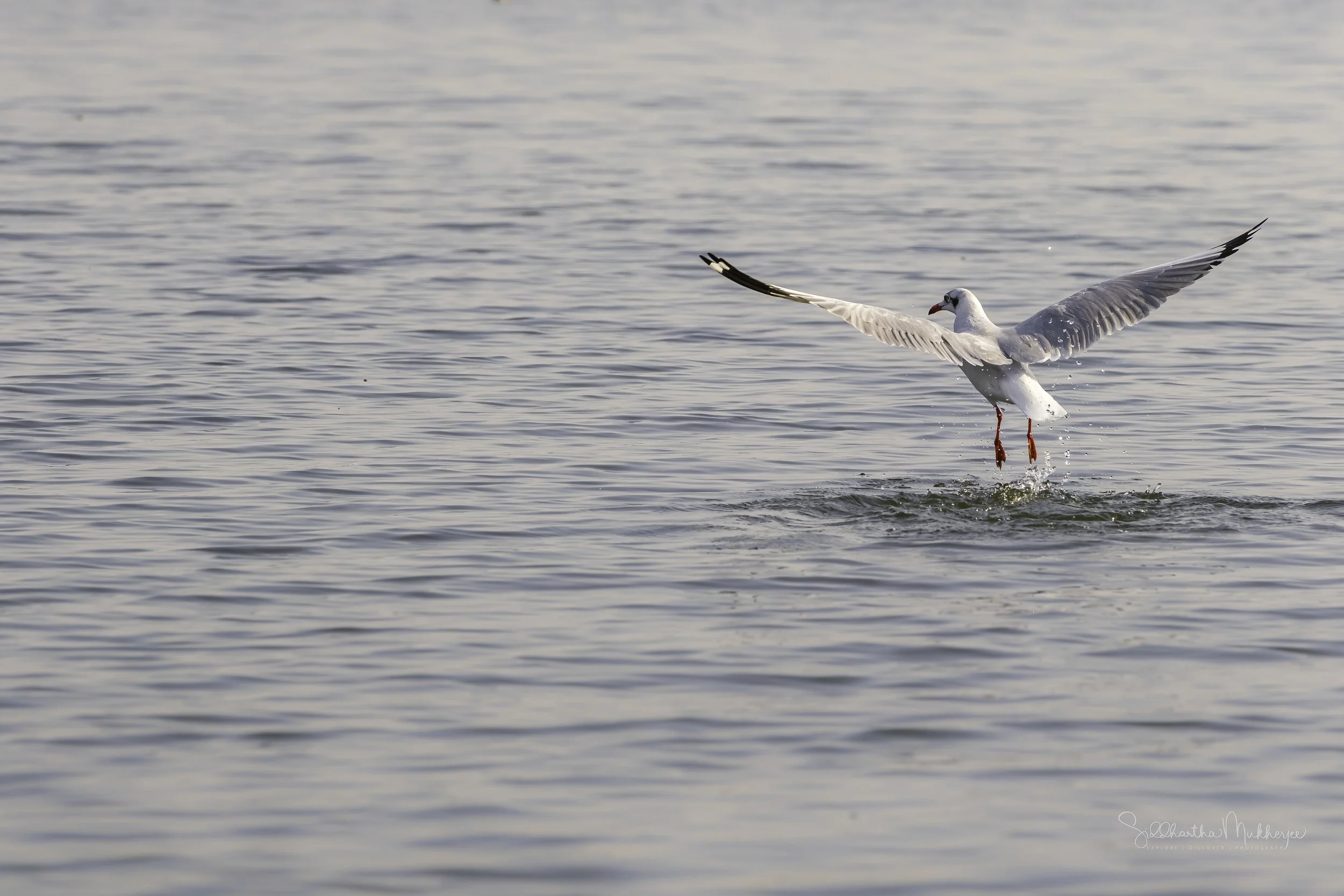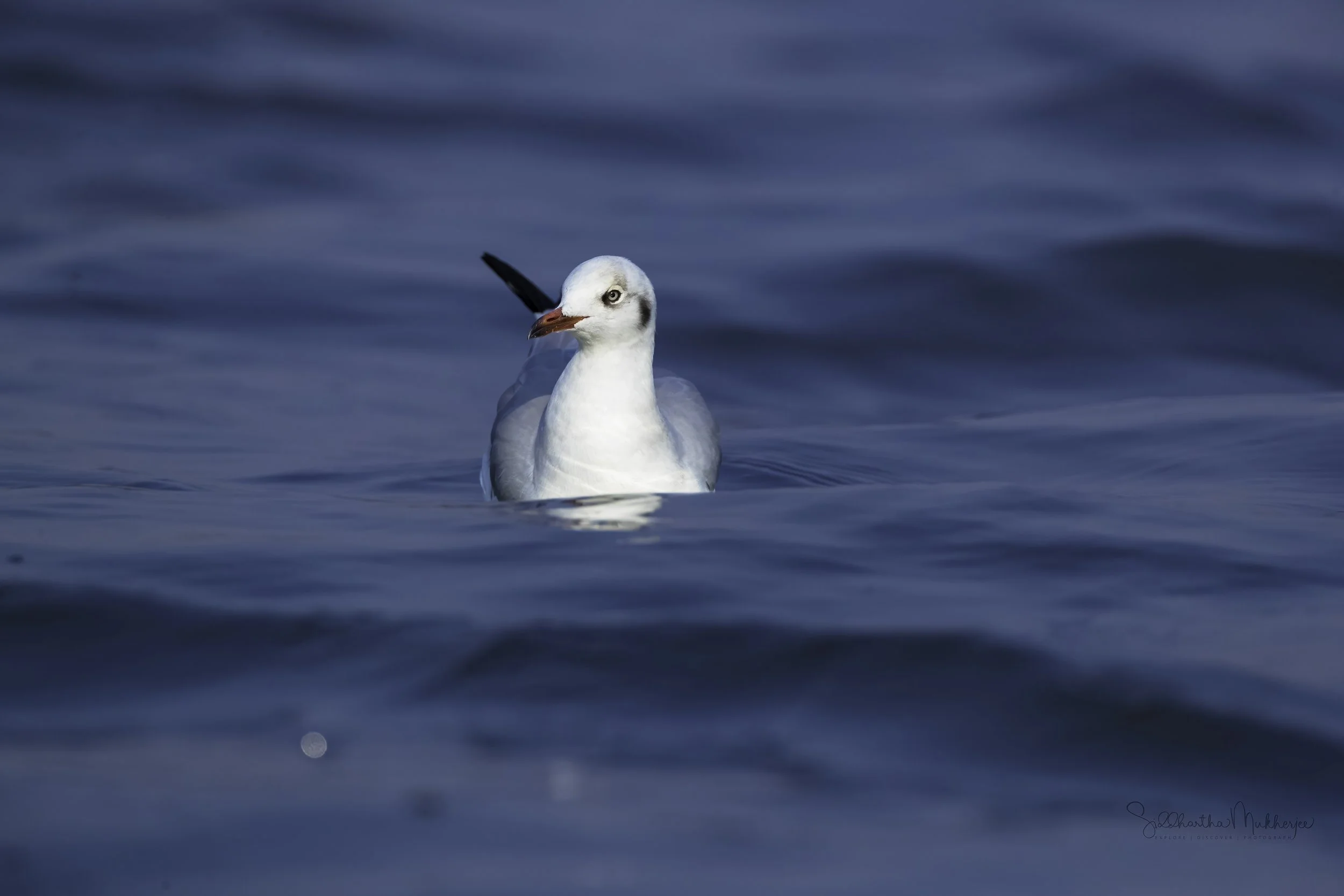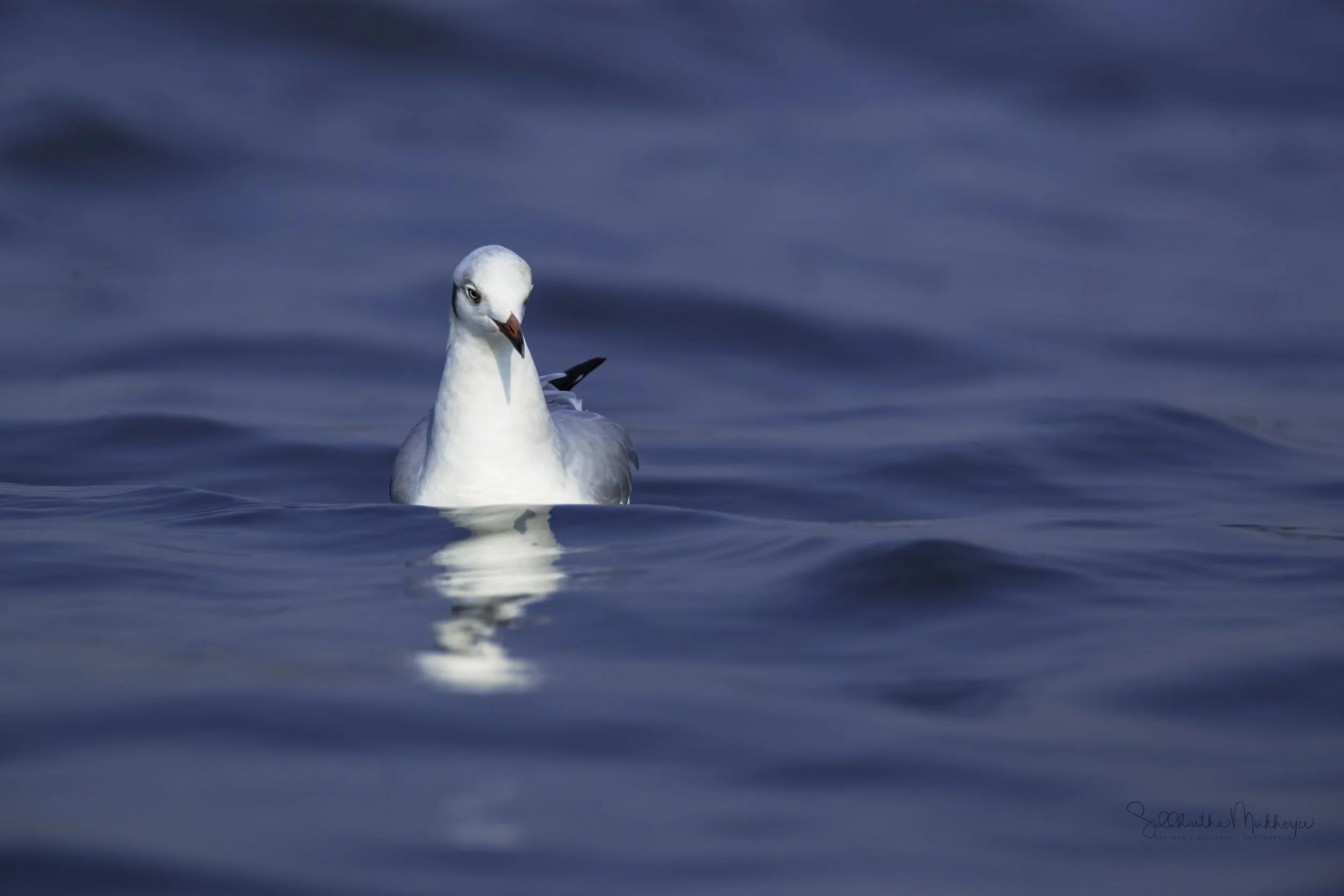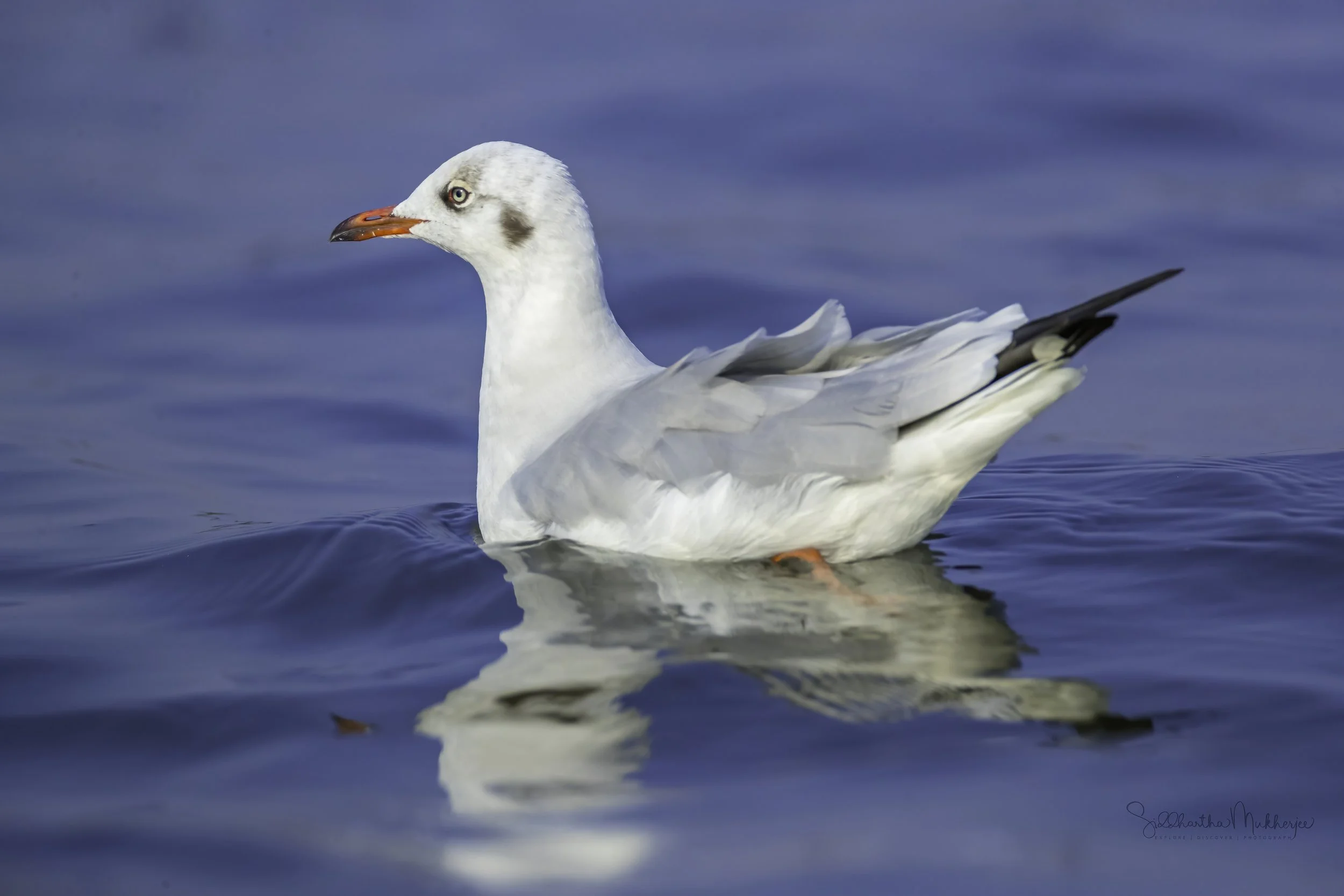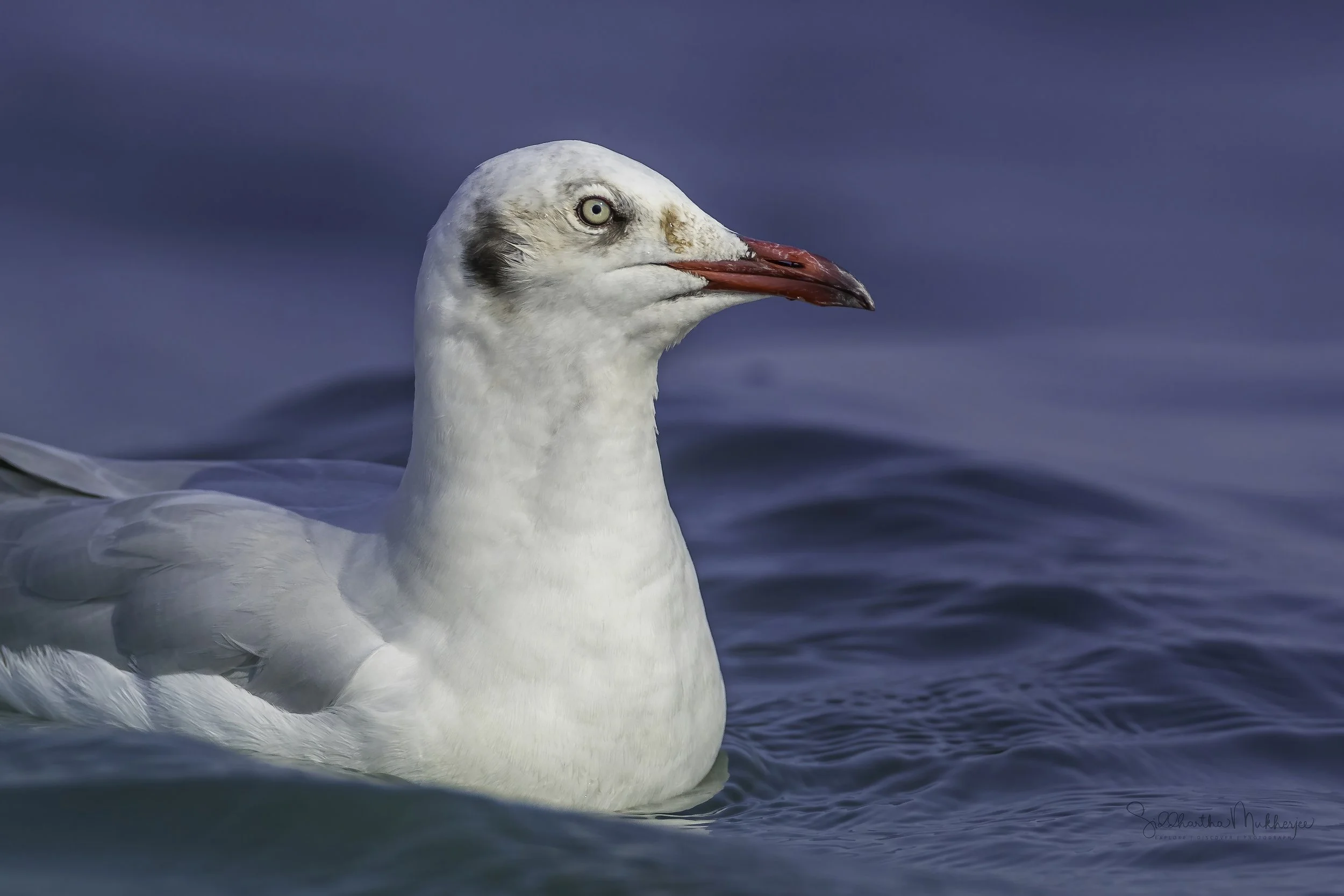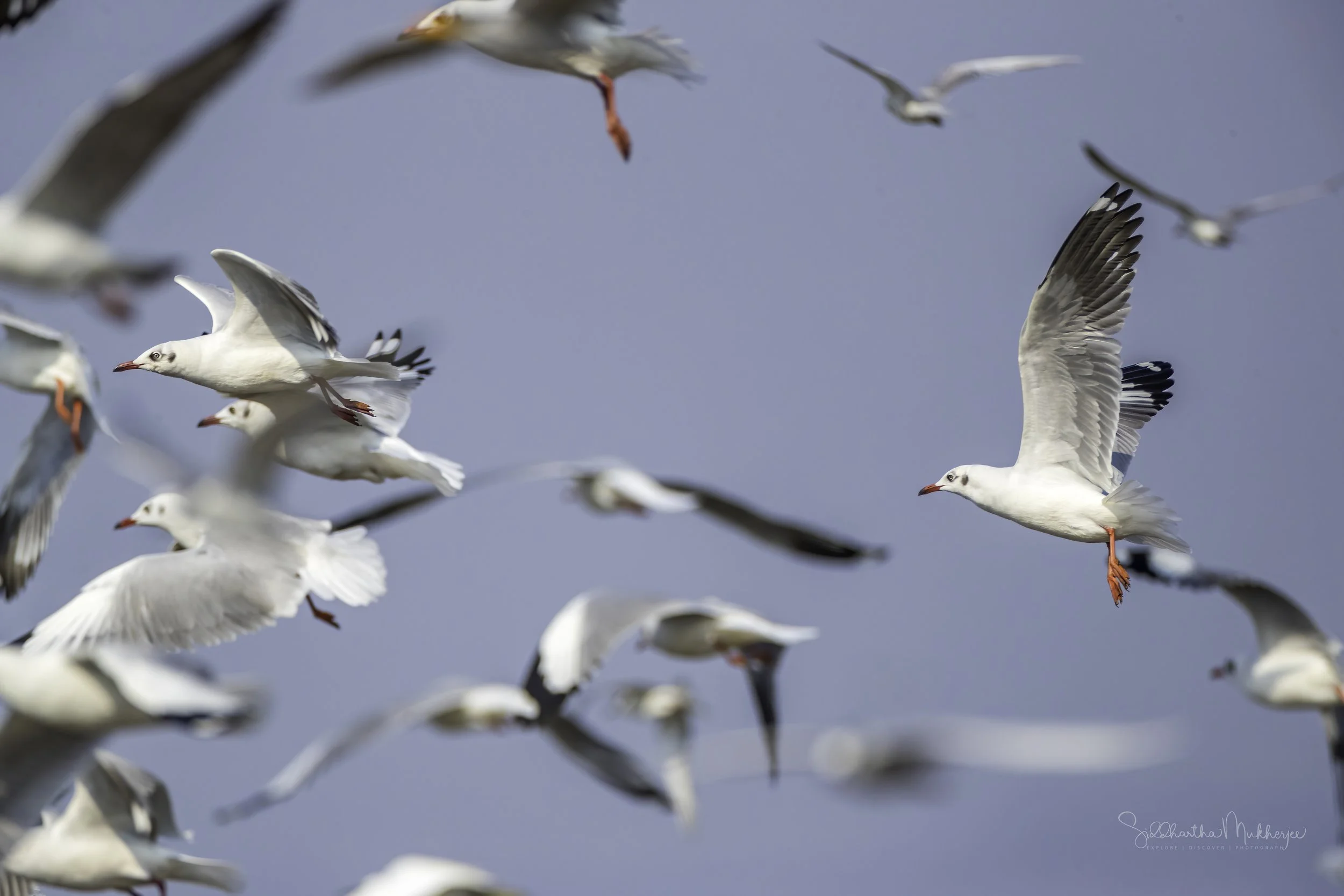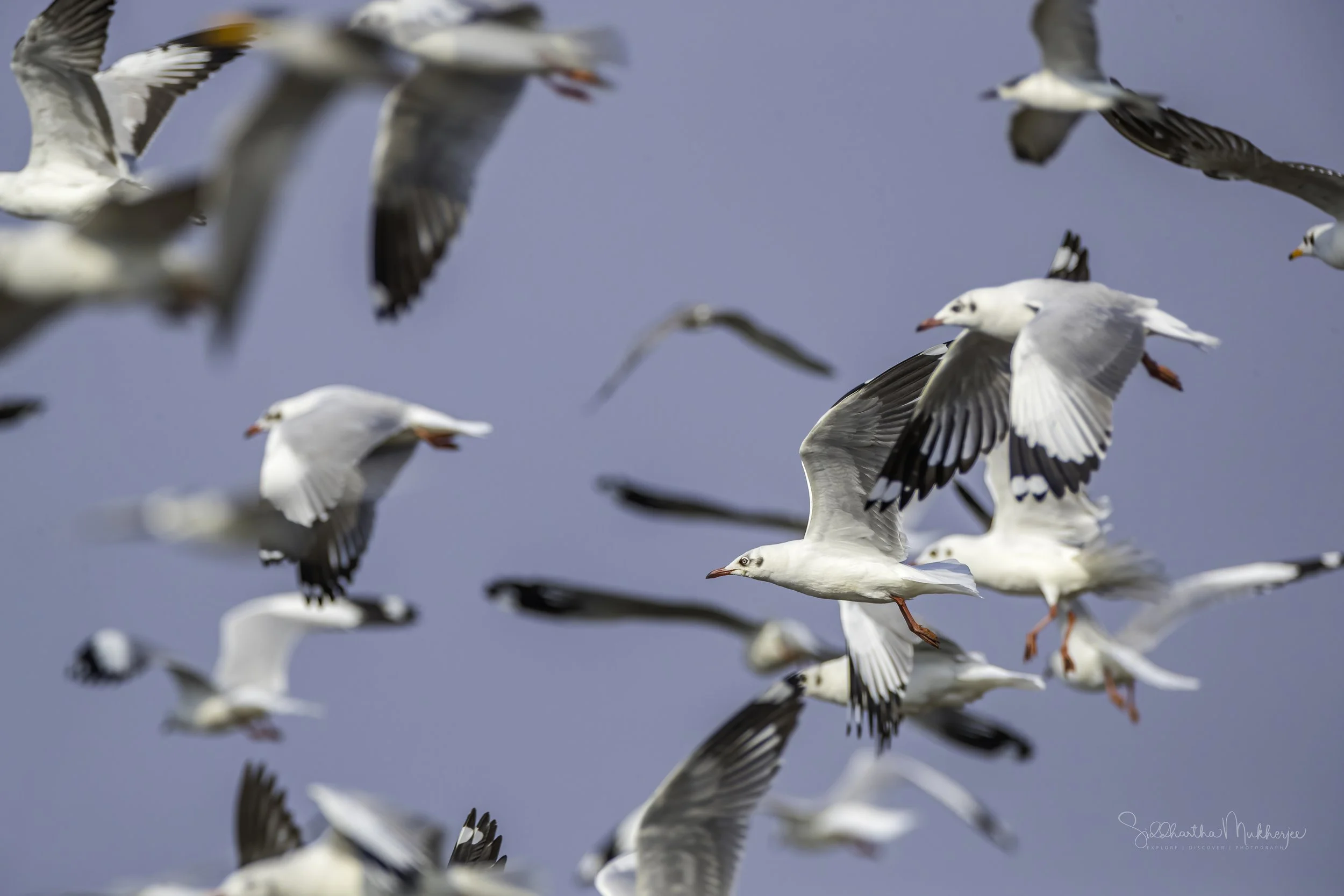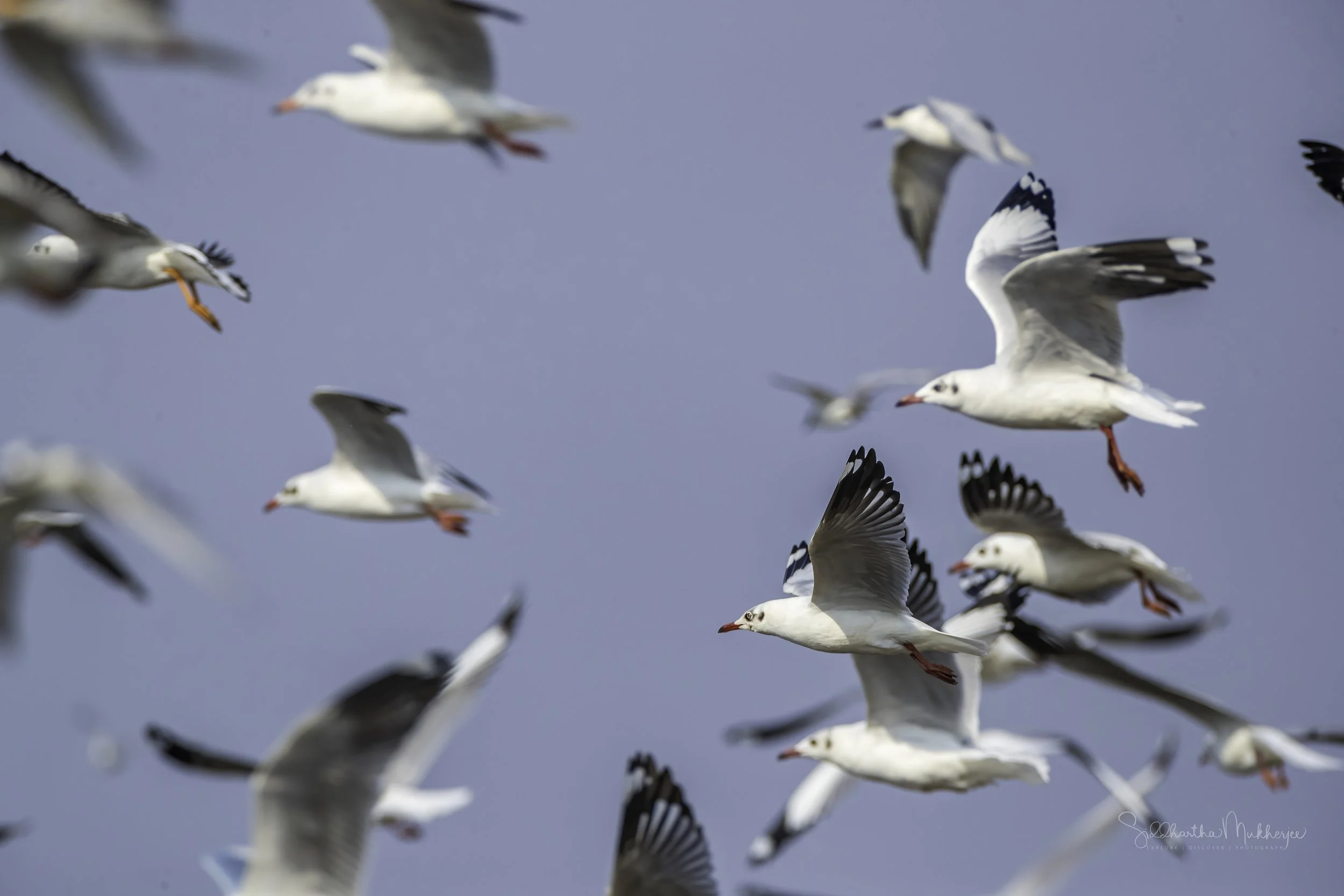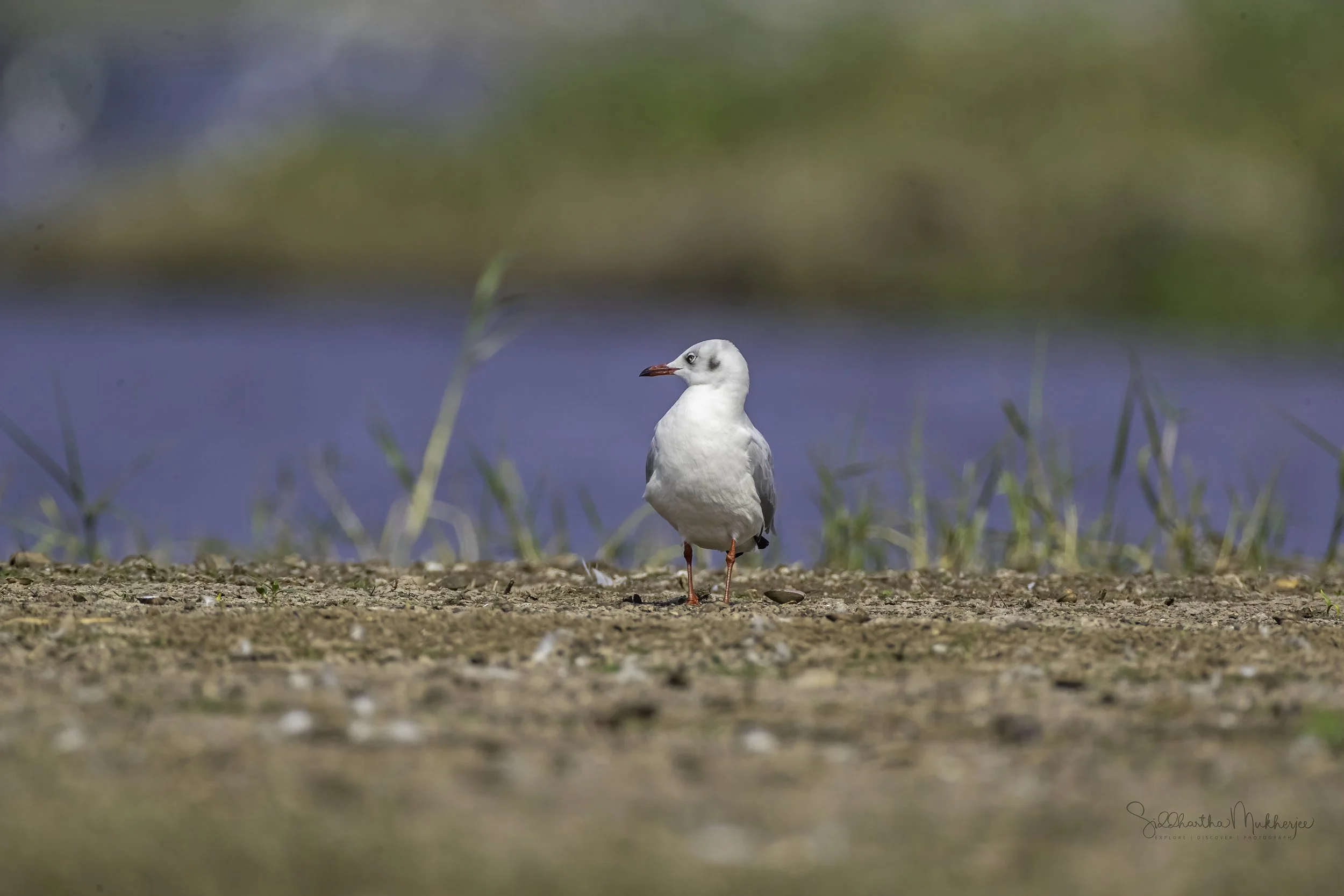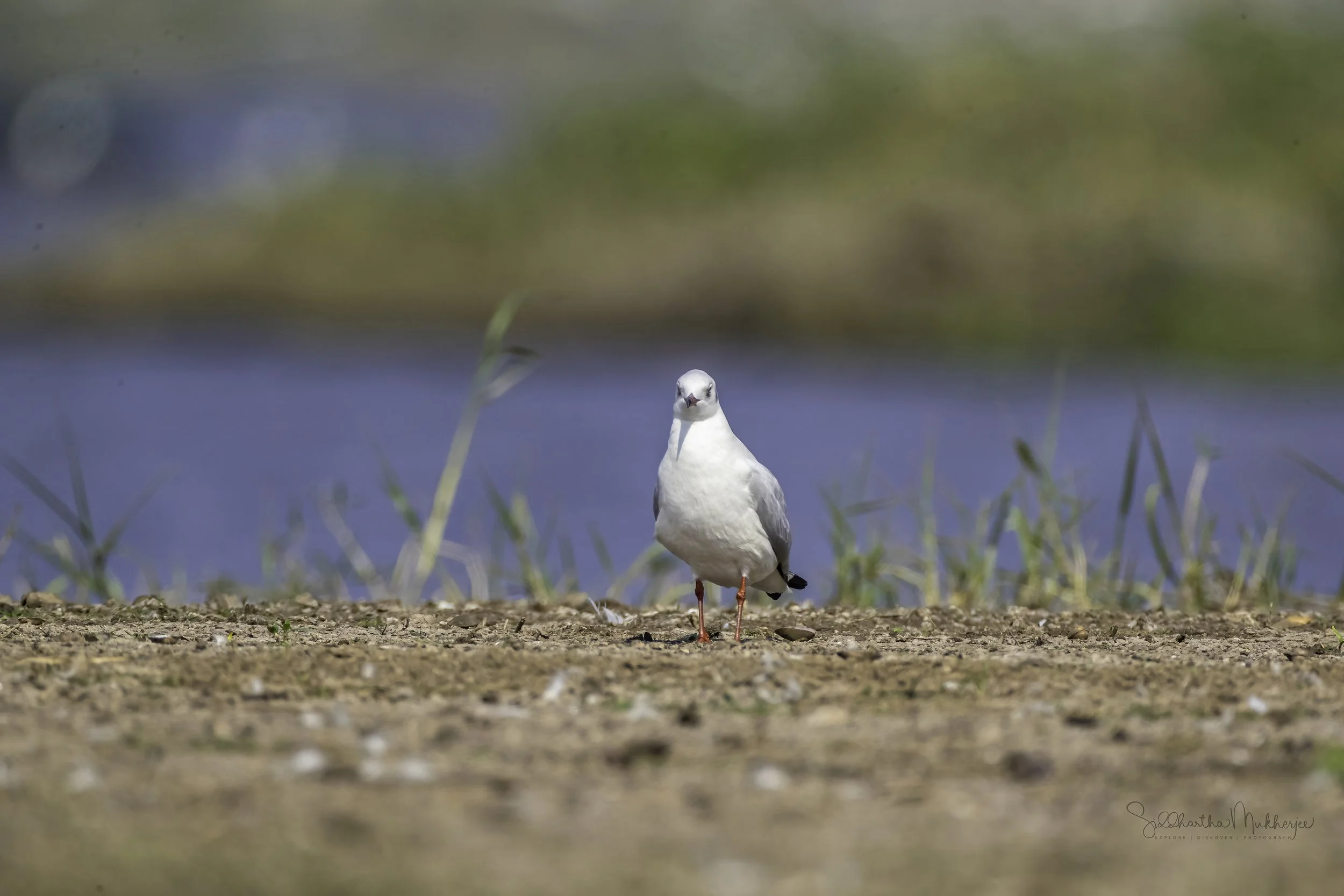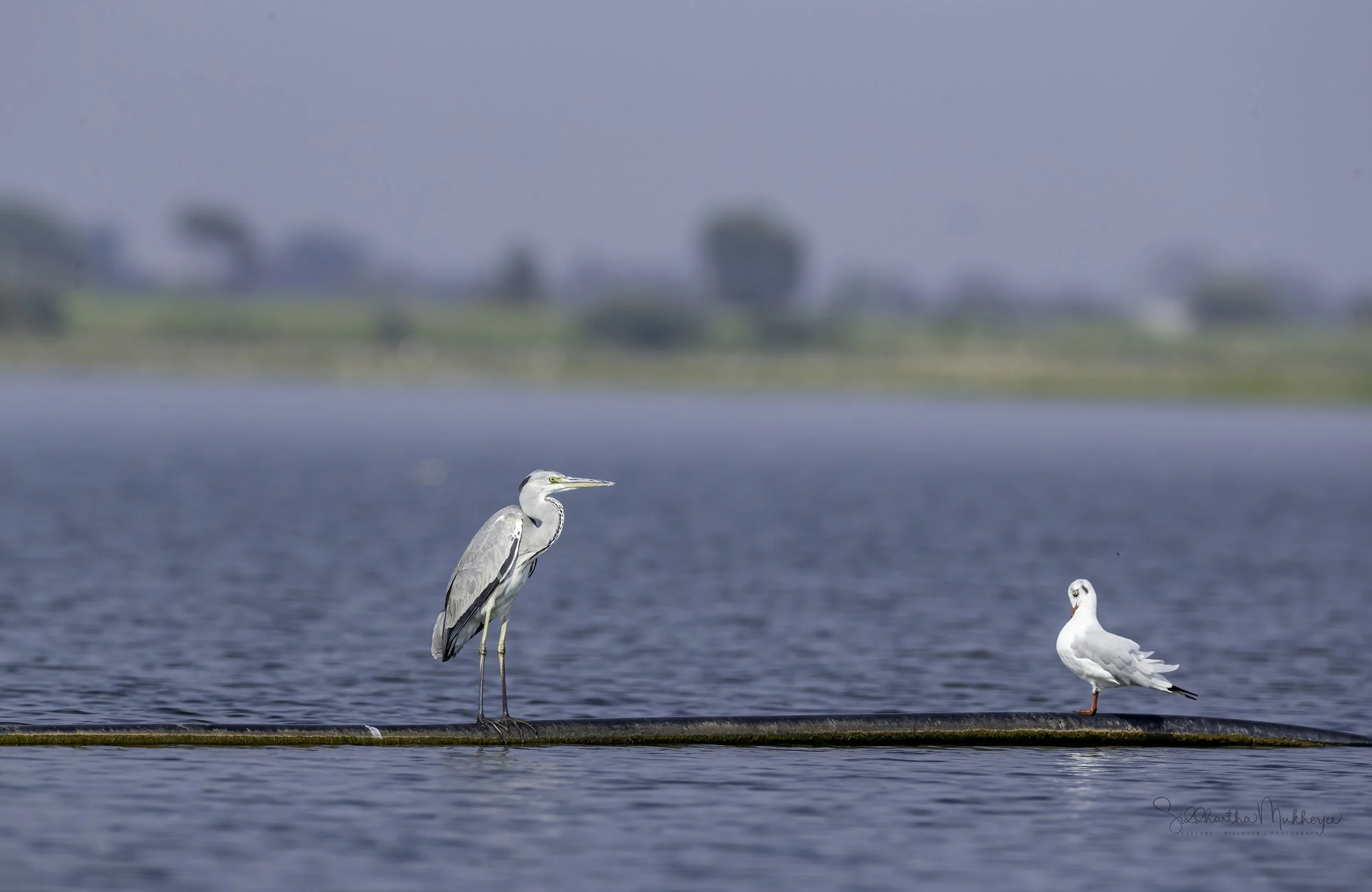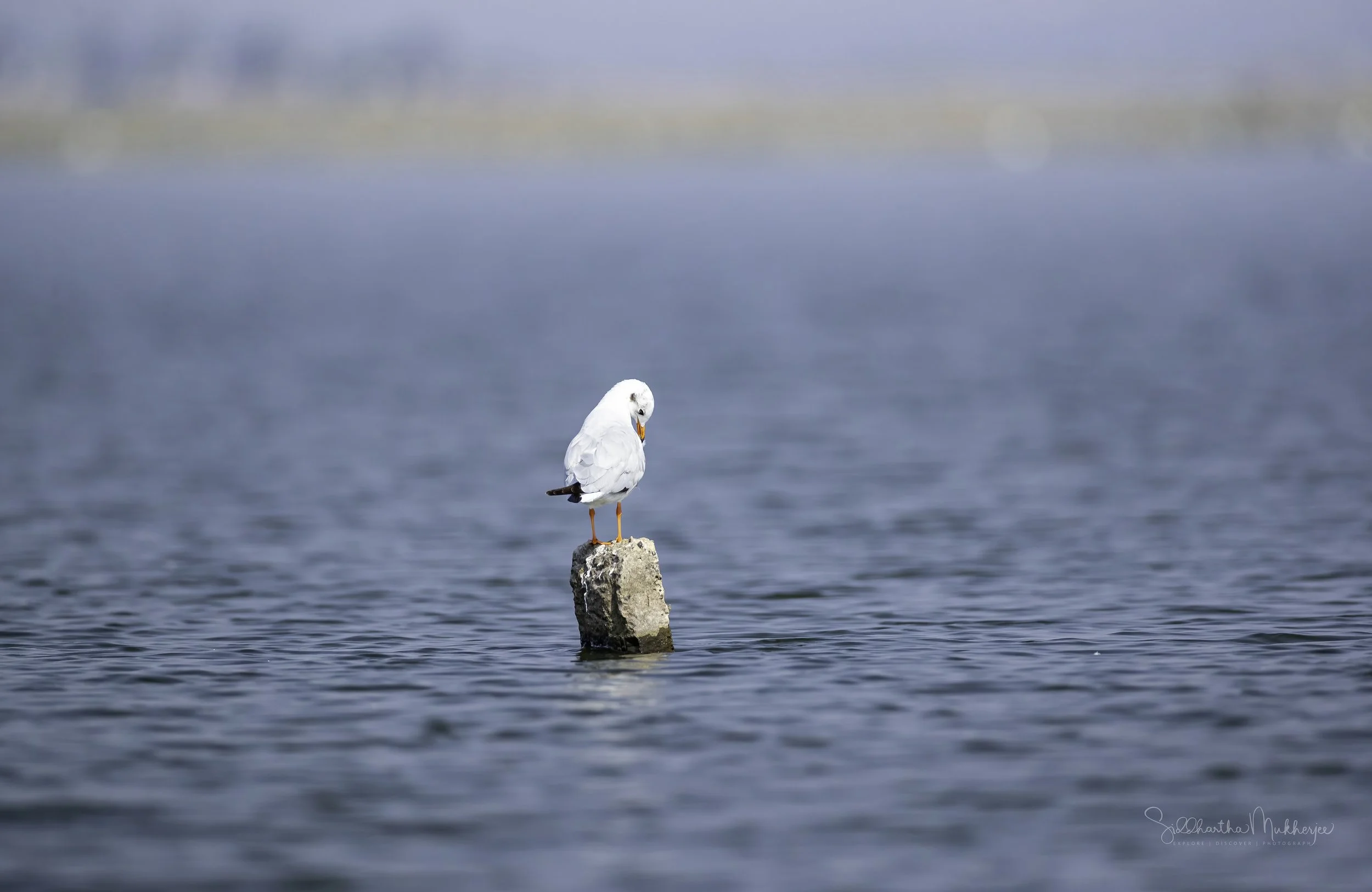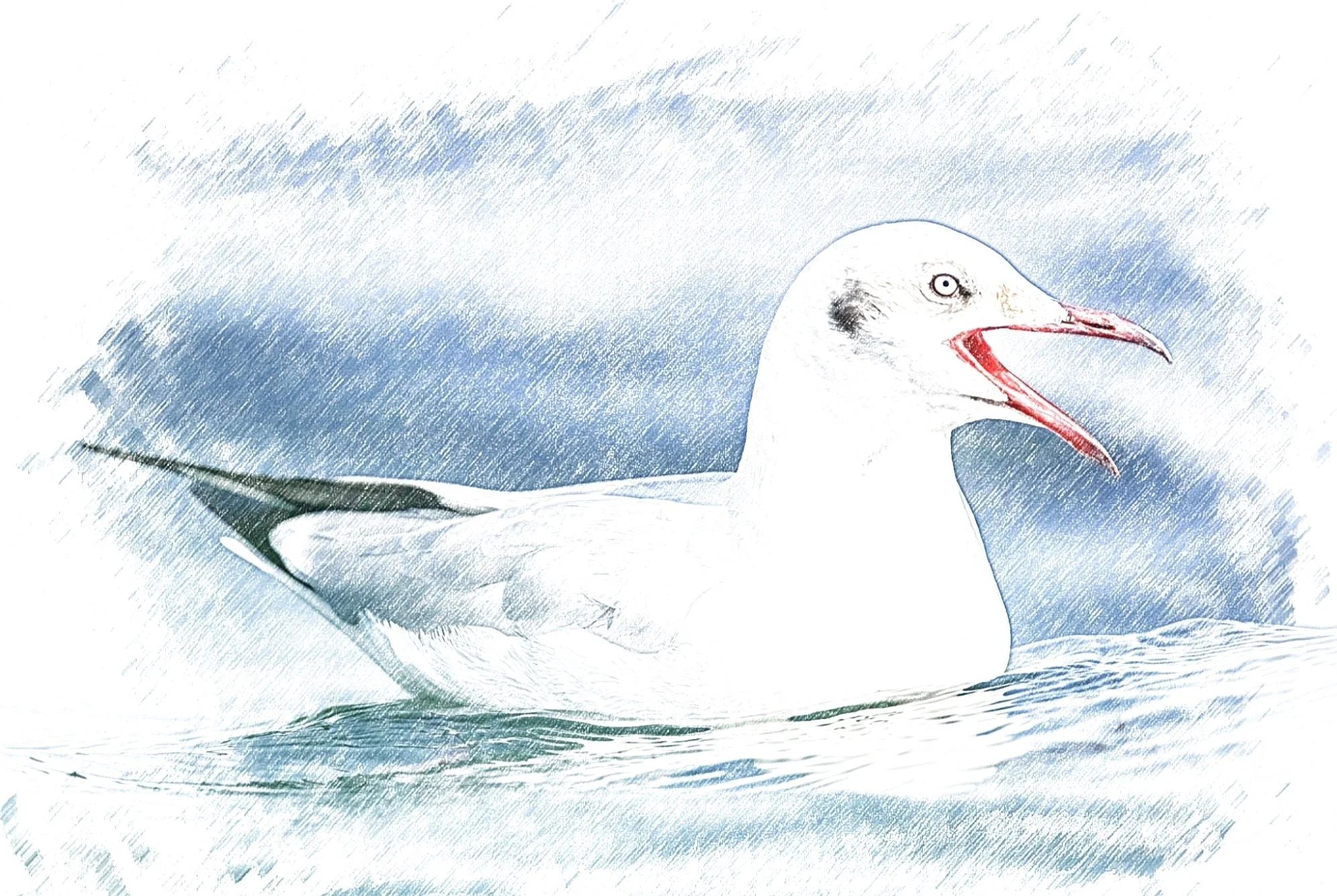Brown-headed Gull
Chroicocephalus brunnicephalus
Bhigwan Bird Sanctuary
To the south of Bhigwan, bereft of any hills, lie the wide Ujni backwater wetlands. A shallow waste water reserve formed by the discharge of water from the Pune region dams like Panshet, Pawna, Khadakwasla, Varasgaon, Temghar, etc. This semi waste water has created an excellent wetland based ecosystem supporting a large variety of water birds, both endemic and migratory, and also helped with the local agriculture. Nearly 300 species of endemic and migratory birds have been recorded here. The rainfall in the Pune region decides the water level in Ujni dam. Lesser the water, the shallower it is and therefore more birds make it their home in the winter.
Surrounding this lush ecosystem are the rich grasslands and fertile farms home to an impressive list of birds, mammals and reptiles. The area around these backwaters are also unique with rich farmlands and dry deciduous scrub forest with interspersed grasslands. Home to an impressive list of birds, mammals and reptiles they protect many mammals like the Chinkara, Hyena, Wolf and Indian Fox and are also popular for grassland birds and the birds of prey, including the magnificent eagles & harriers I’ve talked about in earlier blogs.
Read about the eagles & harriers of Kumbhargaon:
The Endangered Steppe Eagle, the Vulnerable Greater Spotted Eagle & the rare and Vulnerable Eastern Imperial Eagle.
The beautiful Pallid Harrier, Montagu’s Harrier & Eurasian Marsh Harrier.
There are also other spectacular species like the Short-eared Owl, Spotted Owlets & the Indian Courser inhabiting the grasslands.
Read about my birds from Kumbhargaon & the Bhigwan Bird Sanctuary here and watch the videos on my Youtube channel - WildArtWorks.
But today we will spend time on the Ujni backwaters with the Brown-headed Gulls in their non-breeding adult plumage. In India, these brown-headed gull species are distributed in the states of Jammu and Kashmir, Himachal Pradesh, Uttar Pradesh, Rajasthan, Gujarat, Madhya Pradesh, Bihar, West Bengal, Meghalaya, Assam, Tripura, Mizoram, Jharkhand, Odisha, Maharashtra, Andhra Pradesh, Goa, Karnataka, Tamil Nadu and Kerala. The photos you see here are from the Bhigwan Bird Sanctuary in Maharashtra.
During our time here we were hosted by and had the expert help of Sandip Nagare and his team of knowledgeable guides from the Agnipankha Bird Watcher group, especially Ganesh Bhoi, who went out of their way to ensure we had fantastic opportunities to explore, discover, observe & photograph over 82 species of birds and wildlife including some rare ones. We stayed at Sandip’s homestay of the same name and had the added pleasure of indulging in delectable home cooked food.
The Bhigwan Bird Sanctuary is to the south of Bhigwan, where bereft of any hills, lie the wide Ujni backwater wetlands. A shallow waste water reserve formed by the discharge of water from the Pune region dams like Panshet, Pawna, Khadakwasla, Varasgaon, Temghar, etc. This semi waste water has created an excellent wetland based ecosystem supporting a large variety of water birds, both endemic and migratory, and also helped with the local agriculture. Nearly 300 species of endemic and migratory birds have been recorded here. The rainfall in the Pune region decides the water level in Ujni dam. Lesser the water, the shallower it is and therefore more birds make it their home in the winter.
The Ujni or Ujjani Dam, also known as Bhima Dam or Bhima Irrigation Project, on the Bhima River, a tributary of the Krishna River, is an earth-fill cum Masonry gravity dam located near the Ujjani village of Madha Taluk in the Solapur district of the state of Maharashtra in India. The Bhima River, which originates in Bhimashankar of the Western Ghats, and forms the Bhima Valley with its tributary rivers and streams, has twenty-two dams built on it of which the Ujjani Dam is the terminal dam on the river and is the largest in the valley that intercepts a catchment area of 14,858 km² (which includes a free catchment of 9,766 km²). The construction of the dam project including the canal system on both banks was started in 1969 at an initial estimated cost of ₹400 million and when completed in June 1980 the cost incurred was of the order of ₹3295.85 million.
The reservoir created by the 185 feet high earth cum concrete gravity dam on the Bhima River has a gross storage capacity of 3.320 km³. The annual utilisation is 2.410 km³. The project provides multipurpose benefits of irrigation, hydroelectric power, drinking, and industrial water supply and fisheries development. The irrigation supplies benefit 500 km² of agricultural land, particularly in the Solapur district. Water supplied from the reservoir to irrigate agricultural areas primarily aims to reduce the incidence of famines and scarcity during drought conditions. The reservoir operation also lessens the threat due to floods to cities such as Pandharpur (an important religious pilgrimage centre for the Hindus). As a result of irrigation facilities, some of the important crops grown under irrigated conditions are sugarcane, wheat, millet and cotton.
This huge reservoir, almost seeming like a sea, is home to hundreds of birds - flamingos with their slender necks, egrets, painted storks, grey herons and many more. A man-made wetland, these backwaters are a winter sojourn of many migratory birds and is a mesmerising spectacle. This reservoir is one of the largest backwaters in India created by the Ujni dam. This life giving and sustaining reservoir fulfils multiple purposes - irrigation for agriculture, particularly in the Solapur district, being the primary one - but it also has rural, urban and industrial activities that are equally consuming.
Presently India has 26 sites designated as wetlands of International Importance according to Ramsar Convention. As far as Maharashtra goes, of its multiple natural and man-made reservoirs, none are designated as a Ramsar site. But according to Ramsar’s important identification criteria of population of migratory birds, the Ujni backwaters are amongst the six important wetlands of Maharashtra hosting around 250 species of migratory and resident birds ranging from the pied kingfisher, northern shoveler, bar-headed geese, great egret, painted stork, Indian cormorant, Eurasian coot, common moorhen, black-headed ibis, Asian open-bill, the list is pretty long.
With such a blessed habitat harbouring many species of flora and fauna, this wetland has tremendous benefits to the villages around it. Sufficient water for agriculture, livelihoods to many through fishing and tourism, flood control and shoreline stability are some of the aspects this wetland caters to. Though created strategically for economic development, today, the value of these wetlands function far beyond the scope of any instrument of economic growth.
But the modern day demands on this resource are tremendous. Cash crops requiring huge irrigation, unmonitored use of pesticides, untreated and excessive sewage and industrial waste disposals, uncontrolled urban growth and the changing mindsets of people for newer lifestyles are slowly and steadily affecting this huge wetland. Decline in the fish density in the major tributaries of River Krishna, increase in exotic weed species in water are some of the indicators of quality degradation of the wetland recorded by researchers. This isn’t the only threat to this spectacular habitat and its wildlife but it also has long term adverse effects on the present and future human population who are consumers of this wetland in the various ways they utilise it.
The conservation of such a large reservoir isn’t a simple task. It requires judicious water usage for local, agricultural and industrial purposes, advocating advanced irrigation technologies to avoid and minimise wastage and banning diversions of water for non-priority purposes can be some of the large-scale measures possible with equal participation of the Government and people alike. Conservation awareness among the local communities for wetlands and its flora-fauna can help in a long run.
On a smaller scale the villagers of Bhigwan are doing their bit by consciously avoiding plastic litter, controlled fishing and adopting rowing instead of engines for tourist boats wherever possible. These are some of their simple but effective ways to stop draining these life giving wetlands.
Brown-headed Gull
The Brown-headed Gull (Chroicocephalus brunnicephalus) is a small gull which breeds in the high plateaus of central Asia from Tajikistan to Ordos in Inner Mongolia. It is migratory, wintering on the coasts and large inland lakes of the Indian Subcontinent. As is the case with many gulls, was traditionally placed in the genus Larus.
This gull breeds in colonies in large reedbeds or marshes, or on islands in lakes, nesting on the ground. Like most gulls, it is highly gregarious in winter, both when feeding or in evening roosts. It is not a pelagic species, and is rarely seen at sea far from coasts. This is a bold and opportunist feeder, which will scavenge in towns or take invertebrates in ploughed fields with equal relish.
The brown-headed gull is slightly larger than the black-headed gull. The summer adult has a pale brown head, lighter than that of black-headed, a pale grey body, and red bill and legs. The black tips to the primary wing feathers have conspicuous white "mirrors". The underwing is grey with black flight feathers. The brown hood is lost in winter, leaving just dark vertical streaks. This bird takes two years to reach maturity. First year birds have a black terminal tail band, more dark areas in the wings, and, in summer, a less homogeneous hood.
This is a noisy species, especially at colonies. The brown-headed gull call is a loud, raucous "keear" or "geek" sound.
The brown-headed gull species are distributed in India, China, Tajikistan, Kyrgyzstan, Pakistan, Nepal, Bangladesh, Sri Lanka, Myanmar, Thailand, Cambodia, Laos, Vietnam, Malaysia, Singapore and Indonesia and are highly migratory. Vagrants brown-headed gulls have been observed in the United Arab Emirates, Oman, Maldives, Israel, Iran and Afghanistan. In India, these brown-headed gull species are distributed in the states of Jammu and Kashmir, Himachal Pradesh, Uttar Pradesh, Rajasthan, Gujarat, Madhya Pradesh, Bihar, West Bengal, Meghalaya, Assam, Tripura, Mizoram, Jharkhand, Odisha, Maharashtra, Andhra Pradesh, Goa, Karnataka, Tamil Nadu and Kerala. The IBA of the gull species in India are Krishnarajasagar Reservoir, Nalabana Bird Sanctuary (Chilika Lake) and Sulekere Lake. The Important Bird and Biodiversity Areas (IBA) of brown-headed gull species in Tajikistan are Zorkul Nature Reserve, Rangkul valley, Bulunkul lake, Yashilkul lake and Karakul lake. The IBA of these species in Thailand is Inner Gulf of Thailand.
The brown-headed gull (Chroicocephalus brunnicephalus) measures 40 to 45 cm in length and weighs between 450 to 700 grams and is a monotypic species.
Brown-headed Gull - Migration Map
Source: BirdCount.in
These brown-headed gull species do not normally occur in forests. They occur in altitudes ranging from 0 to 4500 meters. The artificial ecosystems of these birds include flooded or ploughed agricultural fields and urban garbage dumps while the natural ecosystems are tropical and subtropical wet grasslands, margins of rivers and streams, intertidal marine marshes with emergent grasses, peatlands, marshes, swamps, bogs, floodplains, waterlogged mudflats, rivers, streams, creeks and brackish wetlands. Their diet is mostly fish. shrimps, offal, insects, grubs, fish waste, worms, carrion, reptiles, rodents and plant material are their primary food. They are opportunistic scavengers, feeding from garbage dump and feeding invertebrates exposed during ploughing of fields.
The breeding season is from May to July in most of the breeding grounds and these are colonial breeders with colonies ranging from 50 to several thousand pairs. The breeding sites are selected in large reedbeds, marshes or on islands in the lakes. They nest on the ground laying a typical clutch of 2-3 eggs.
Given their migratory nature, in the month of May, these brown-headed gull species return to the breeding grounds in islands and surrounding marshes in large, cold, high altitude lakes of central Asia. The breeding grounds are spread over Kyrgyzstan, Tajikistan, India (Jammu and Kashmir) and China (west Xinjiang and west Tibet). They migrate to the coast of Indian subcontinent, coast of southeast Asia and gangetic plains in India for wintering. The return trip to the breeding grounds takes place in March and April.
The global population size of the brown-headed gull (Chroicocephalus brunnicephalus) has not been quantified. The overall population trend of these gull species is considered to be stable. Throughout its range it is reported to be fairly common. The generation length is 11.5 years. Their distribution size is about 851,000 km². The brown-headed gull does not approach the thresholds for being Vulnerable, either under the range size criterion, or under the population trend criterion or under the population size criterion. Degradation of wetland habitats and hunting for food are the main threats that may endanger the survival of these gull species. The IUCN (International Union for Conservation of Nature) has categorized and evaluated the species and has listed it as of "Least Concern". The CITES (Convention on International Trade in Endangered Species of Wild Fauna and Flora) status is ‘Not Evaluated’ for the brown-headed gull (Chroicocephalus brunnicephalus).
| Brown-headed Gull | Black-headed Gull |
|---|---|
| Size 42cm | Size 38cm |
| Iris color varies with age, juveniles/immature show dark iris, nearing adulthood starts showing pale iris and adults have brighter pale yellow iris. | Iris remains dark at all stages be it juvenile or adult. |
| Not so round head with steep forehead. | Smaller and rather round head. |
| Stout bill with prominent bulge on both mandible at gnoy spot (right before the end of bill). | Slimmer bill with less pronounced gnoy-spot |
| Juveniles/ immature has complete black outer most primaries. | Juveniles/ immature/ adults have long white flash to primaries. |
| Adults have black outer most primaries with two white spots (mirror). |
Related Posts


